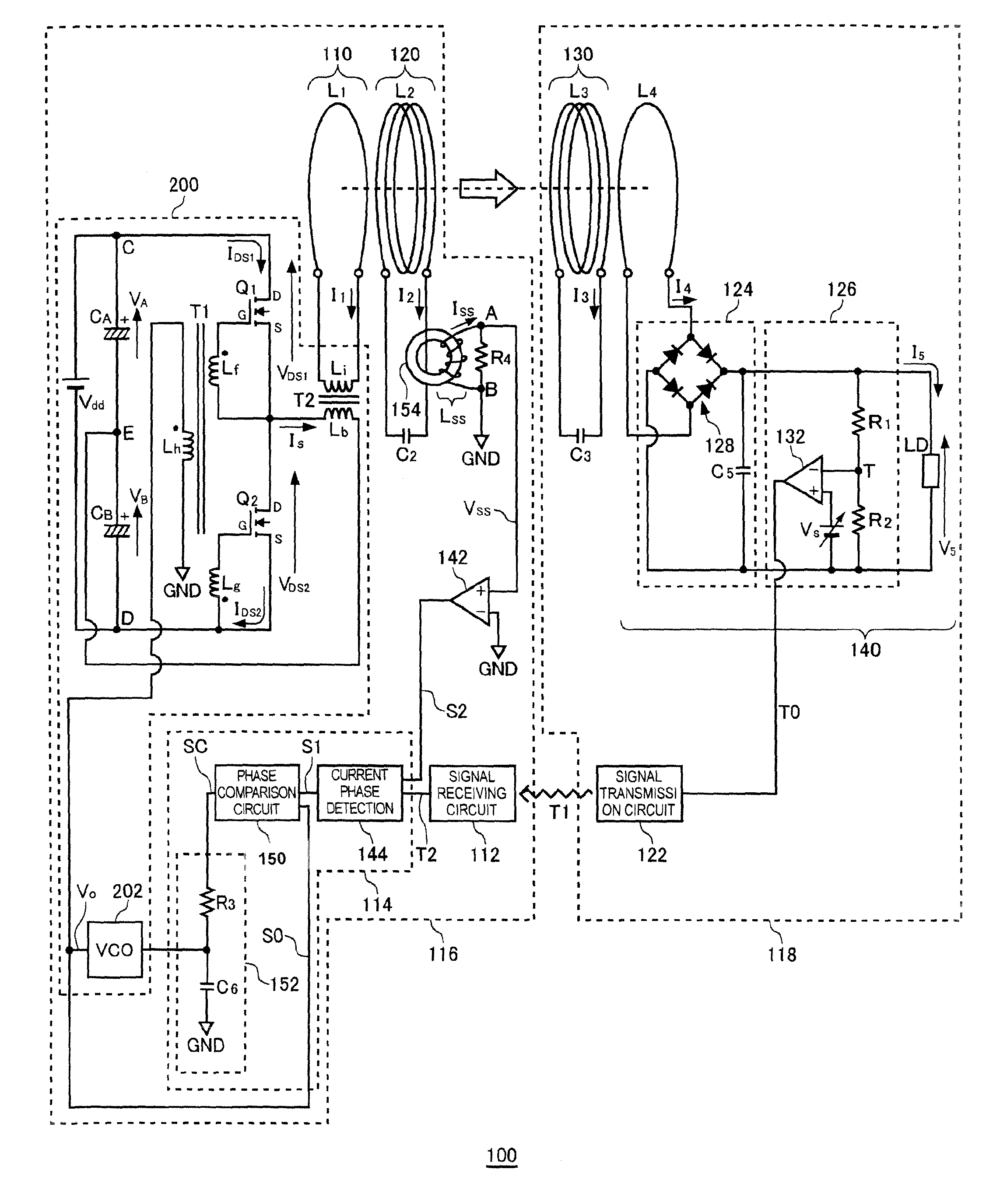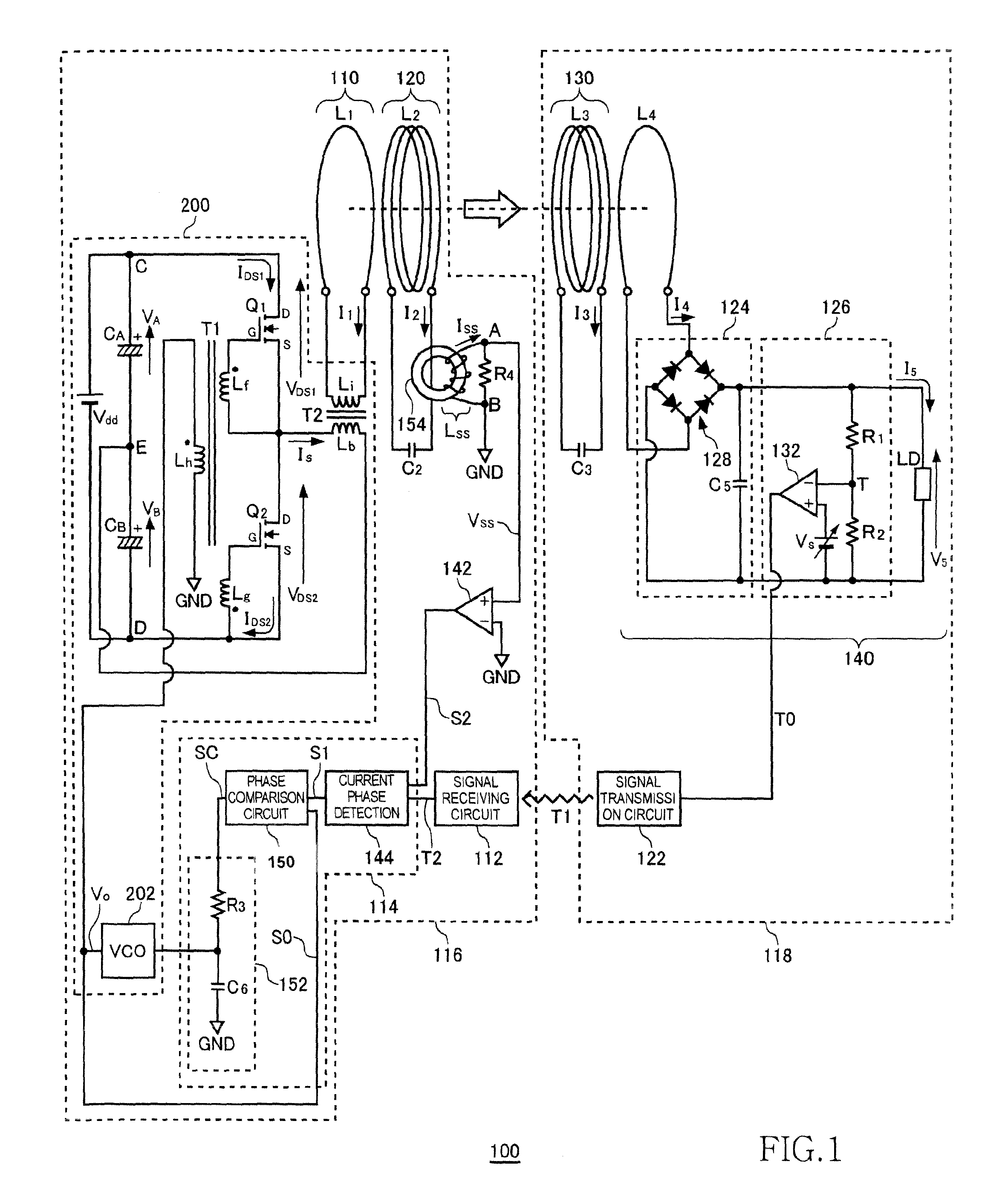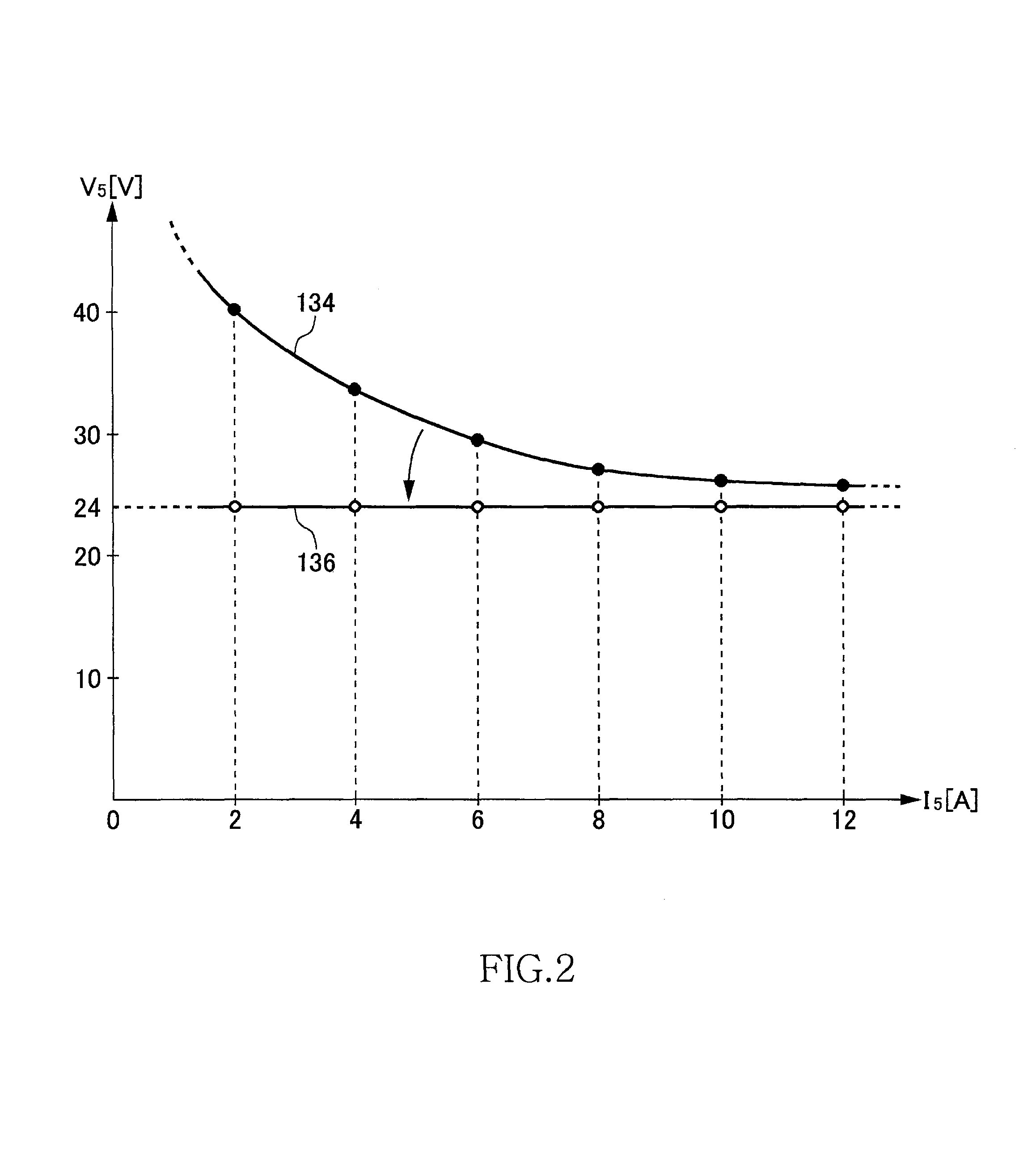Wireless power feeder, wireless power receiver, and wireless power transmission system
a technology of wireless power transmission system and feeder, applied in the direction of electric variable regulation, process and machine control, instruments, etc., can solve the problem of not being able to feed big electric power, and achieve the effect of effective control of transmission power
- Summary
- Abstract
- Description
- Claims
- Application Information
AI Technical Summary
Benefits of technology
Problems solved by technology
Method used
Image
Examples
first embodiment
[First Embodiment]
[0069]FIG. 1 is a system configuration view of a wireless power transmission system 100 according to the first embodiment. The wireless power transmission system 100 includes a wireless power feeder 116 and a wireless power receiver 118. The wireless power feeder 116 includes, as basic components, a power transmission control circuit 200, an exciting circuit 110, a feeding coil circuit 120, a phase detection circuit 114, and a signal receiving circuit 112. The wireless power receiver 118 includes a receiving coil circuit 130, a loading circuit 140, and a signal transmission circuit 122.
[0070]A distance (hereinafter, referred to as “inter-coil distance”) of about 0.2 m to 1.0 m is provided between a feeding coil L2 of the feeding coil circuit 120 and a receiving coil L3 of the receiving coil circuit 130. The wireless power transmission system 100 mainly aims to feed power from the feeding coil L2 to receiving coil L3 by wireless. In the first embodiment, a descripti...
second embodiment
[Second Embodiment]
[0133]FIG. 14 is a system configuration view of a wireless power transmission system 1100 according to the second embodiment. The wireless power transmission system 1100 includes a wireless power feeder 1116 and a wireless power receiver 1118. The wireless power feeder 1116 includes, as basic components, a power transmission control circuit 1200, an exciting circuit 1110, a feeding coil circuit 1120, a phase detection circuit 1114, and a signal receiving circuit 1112. The wireless power receiver 1118 includes a receiving coil circuit 1130, a loading circuit 1140, a control signal generation circuit 1170, a reference signal generation circuit 1172, and a signal transmission circuit 1122.
[0134]A distance (hereinafter, referred to as “inter-coil distance”) of about 0.2 m to 1.0 m is provided between a feeding coil L2 of the feeding coil circuit 1120 and a receiving coil L3 of the receiving coil circuit 1130. The wireless power transmission system 1100 mainly aims to ...
PUM
| Property | Measurement | Unit |
|---|---|---|
| distance | aaaaa | aaaaa |
| resonance frequency fr | aaaaa | aaaaa |
| diameter | aaaaa | aaaaa |
Abstract
Description
Claims
Application Information
 Login to View More
Login to View More - R&D
- Intellectual Property
- Life Sciences
- Materials
- Tech Scout
- Unparalleled Data Quality
- Higher Quality Content
- 60% Fewer Hallucinations
Browse by: Latest US Patents, China's latest patents, Technical Efficacy Thesaurus, Application Domain, Technology Topic, Popular Technical Reports.
© 2025 PatSnap. All rights reserved.Legal|Privacy policy|Modern Slavery Act Transparency Statement|Sitemap|About US| Contact US: help@patsnap.com



